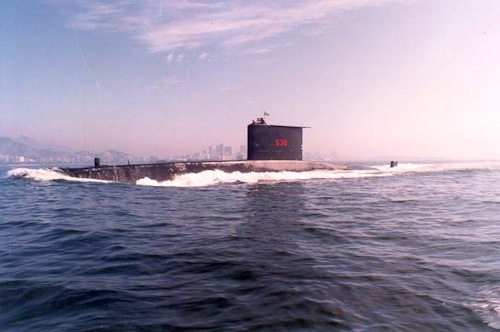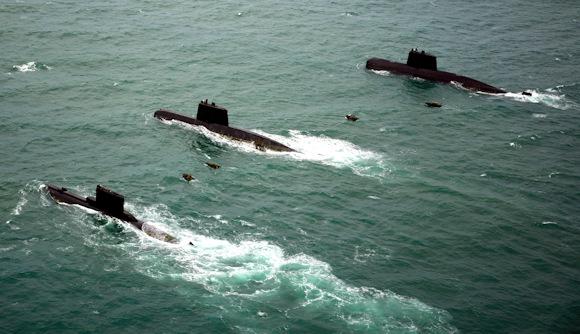According to Commodore Gabriel Eduardo Attis, commander of theAtlantic Naval Area and inspector ofSubmarine weapon, at the Télam Agency, the Armada Argentina is working on the reconstruction of the submarine component through the Genesis plan which will be presented to the leaders of the Armada and the Ministerio de Defensa by the end of this year.
The Plan envisages as a first phase the purchase of a relatively modern unit being decommissioned from another country to ensure a good level of training for the crew in view of the arrival of what will become the sixth generation of Armada submarines.
At the same time it is necessary to invest in the improvement and updating of the state shipyards Tanador, which, despite having demonstrated the ability to carry out repairs and half-life upgrades to the models TR 1700, for the development and construction of a new unit they require the support of an external company, which should build the first two boats abroad, while the remaining four would be built in Buenos Aires.
The Buenos Aires requirement is for six units so that three are in surveillance of the three most strategically important areas of the country, one on patrol and the remaining two boats in port or under repair. These units must have diesel-electric propulsion, the need for AIP is not specified (Air Independent Propulsion, ed), and an autonomy that allows him at least 90 days of patrolling in the 1.783.278 km2 of the Argentine Sea.

The submarine to be used for training will likely be a class Tupi Brazilian (Type 209 / 1400, photo) discontinued by Marinha do Brasil with the arrival of the class Scorpène and much coveted by the navies of South American countries.
Economic hardship and the need for technology transfer leads to consider, given the requirements of the Armada, four models of submarines: the German HDW Type 209 / 1400mod e Type 214, the Chinese Type 039, the Russians Project 636 (Kilo).
From a logistical point of view, HDW submarines would be the most suitable given the historic collaboration in the submarine field that began between Buenos Aires and Berlin in the early 70s with the class Salta (Type 209 / 1200) and continued from 1977 with the development of the class Santa Cruz (TR-1700).
Il Type 039 of the Wuchang shipyards could be requested at a subsidized price in Beijing, as part of the compensation for the presence of the Chinese satellite base in Neuquén. Despite the not always cordial relations between Buenos Aires and Beijing given the issue of illegal fishing in the Argentine EEZ, the two countries are getting closer not only from a political and economic point of view but also from a military point of view. In fact, negotiations are currently underway for the purchase of APC Norinco ZBL-9 for theEjercito.
While the Project 636 Kilo of the JSC Admiralty Shipyard, could be exchanged with Moscow in exchange for foodstuffs, in particular meat, to obviate the sanctions imposed on Russia by the European Union as already happened with the Sukhoi Su 24 proposal Fencer in 2014.
 Argentina boasts a long underwater tradition sanctioned by the 11.378 armaments law of 7 October 1927 which authorized the purchase of three submarines and all the work necessary to house them at the naval base of Mar del Plata and the entry of the three boats on 3 September 1933. The submarines built at the Tosi shipyard in Taranto took the name of Santa Fe, Santiago del Estero e Salta starting the tradition of naming the boats with the names of the six Argentine regions. Which were replaced in the late 50s with former Americans of the class Balao (USS Macabi and USS Lamprey).
Argentina boasts a long underwater tradition sanctioned by the 11.378 armaments law of 7 October 1927 which authorized the purchase of three submarines and all the work necessary to house them at the naval base of Mar del Plata and the entry of the three boats on 3 September 1933. The submarines built at the Tosi shipyard in Taranto took the name of Santa Fe, Santiago del Estero e Salta starting the tradition of naming the boats with the names of the six Argentine regions. Which were replaced in the late 50s with former Americans of the class Balao (USS Macabi and USS Lamprey).
Subsequently i Balao, decommissioned at the beginning of the 70s, were replaced by guppy ex-US Navy (USS Catfish and USS Chivo), which were joined by the two Type 209 starting in 1974 and replaced with i TR 1700.
Photo: Armada Argentina / Marinha do Brasil / web












